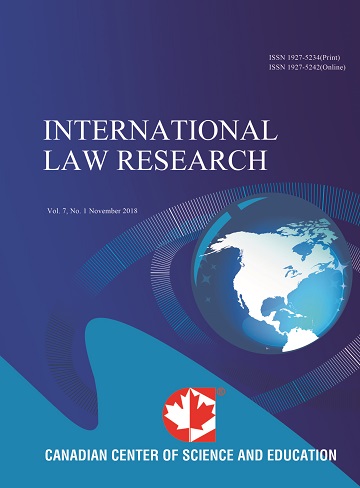Business and Human Rights: Analysing Discursive Articulation of Stakeholder Interests to Explain the Consensus-based Construction of the ‘Protect, Respect, Remedy UN Framework’
- Karin Buhmann
Abstract
The 2008 United Nations (UN) Framework ‘Protect, Respect, Remedy’ broke ground by being accepted by the UN’s main human rights body, the Human Rights Council, as a first ever authoritative clarification of human rights responsibilities of business enterprises as well as States’ duties to protect against human rights violations caused by business organisations. The Human Rights Council’s acceptance of the UN Framework stands out because previous efforts to reach agreement on norms for business responsibilities for human rights within a comparable UN setting had failed. As a UN initiative aimed at developing norms that may eventually become international law, the process, which was undertaken by the Special Representative of the Secretary-General (‘SRSG’), Professor John Ruggie, also stood out because it applied a multi-stakeholder approach involving representatives of business organisations as potential duty-bearers. Through a discourse analysis this article explores how and why the SRSG process delivered broad-based acceptance of the UN Framework not only with the UN but also with non-state actors. It concludes that consensus came about as a result of strategic usage of language, which addressed the specific interests of particular stakeholders in ways that induced acceptance of emerging normative expectations that business organisations take responsibility for human rights. In combination with the multi-stakeholder approach, which allowed for direct participation of business organisations as prospective duty-holders, consensus emerged leading to institutionalisation of norms on business responsibilities for human rights for States as well as business organisations.
- Full Text:
 PDF
PDF
- DOI:10.5539/ilr.v1n1p88
Journal Metrics
h-index (2017): 2
i10-index (2017): 0
h5-index (2017): N/A
h5-median (2017): N/A
Index
- CNKI Scholar
- COPAC
- CrossRef
- DTU Library
- EuroPub Database
- Excellence in Research for Australia (ERA)
- Ghent University Library
- Google Scholar
- Harvard Library
- Infotrieve
- Jisc Library Hub Discover
- LOCKSS
- Open J-Gate
- PKP Open Archives Harvester
- Publons
- ROAD
- Scilit
- SHERPA/RoMEO
- Stanford Libraries
- Ulrich's
- UniCat
- Universe Digital Library
- UoS Library
- WorldCat
Contact
- Joseph TaiEditorial Assistant
- ilr@ccsenet.org
